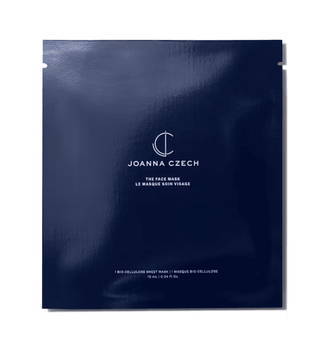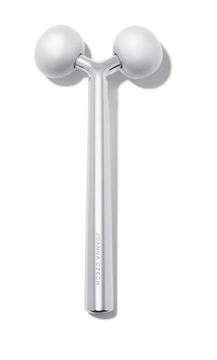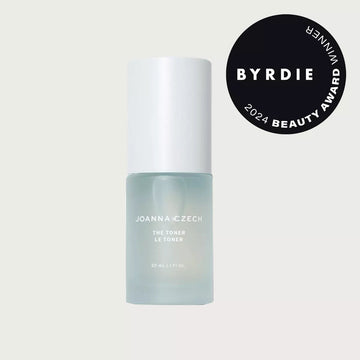The Effect Of Stress On Your Skin - And How To Treat It

Is your skin breaking out, feeling tight, looking dull and gray or red and patchy? Or perhaps all the above? While reactions may vary, the cause of these symptoms (and more) is often the same – stress. NEWBY HANDS shares the dos and don’ts for taking the sting out of stressed skin
Just as stress affects your mental wellbeing, sleeping pattern and gut health, it can also have a detrimental impact on how your skin looks, feels and acts. Whether the cause is internal emotional stress or external skin aggressors (often unwittingly caused by an over-enthusiastic skin regimen), the results are much the same. What’s more, things can get worse if they’re left untreated, as when our skin starts to react, the protective barrier is damaged, making it even more vulnerable.
As one leading skin scientist told me, a reaction is often exacerbated “not by the wrong product, but by the right product in the wrong place. Once the skin barrier is compromised, then even a foundation that you use every day can create a problem. Rather than sitting on the skin, it can now get into the skin.” While the cause behind a dramatic change in your skin may be easy to identify (and rectify), what you may not realize is that frequent mild rashes, dry patches, breakouts or itchiness and flaking can all be caused by ongoing stress. Here’s what you can do to help…
Don’t overload your skin
Increasingly, aestheticians and dermatologists report seeing self-inflicted damage from the overuse of peels, scrubs, micro-needling and other invasive devices. Dermatologist Dr Dendy Engelman calls it “going rogue, as people try to recreate the treatments we do in-clinic in their bathrooms. As a dermatologist, I can do the hard treatments, but at home you should nurture your skin.” The bottom line? The occasional use of these at-home treatments is OK, but be careful not to over-use them.
It’s the same story with skincare. We sometimes talk of having a “wardrobe of serums”, but the key is to not use them all at the same time. “I see this a lot with women who are having trouble with their skin,” says aesthetician Joanna Czech. “I get them to look at their products and strip it back to a cleanser, toner, two serums – not 10 – and a comforting cream. And ideally make one of those serums hyaluronic acid, to keep stressed skin hydrated.”
Rethink exfoliation
“Even stressed skin needs some exfoliation, especially as a dry, flaky texture can be a sign of stress,” says Czech. “You want to exfoliate, but not over-exfoliate – the idea is to lift off the dead surface cells, not strip off the top layer of your skin. If you are using a face cloth with your cleanser or have a mildly acidic toner, then that’s enough – you don’t need to use a scrub or peel. I love adding a bit of scrub to a milky or balm cleanser – it does the job but without damaging the skin. Otherwise, exfoliating with a peel, pad or scrub twice a week is enough for stressed skin. You shouldn’t be using an exfoliating wash, an acid toner, then a scrub and peeling mask – it’s too much for any skin type.”
Get a healthy glow
Dull, gray-toned skin can be a sign of internal stress – the capillaries constrict, resulting in less blood flow near the skin surface. “Good circulation is key to healthy skin, as it brings oxygen and nutrients. Plus, when the blood is closer to the skin surface you get better absorption of your skincare,” says Czech. “Massaging the face is simple to do, even if you just take a few more seconds to massage in your cleanser and creams. I love micro-current devices, like NuFace’s one, as they are an easy way to stimulate the muscle and skin.”
Cool down your skin
“Anything cold is very energizing for stressed, sluggish skin,” says Czech. “I make ice cubes for my facials from green or chamomile tea – both are anti-inflammatory – or from dandelion tea, as it’s good for draining puffiness and fluid. Run them over the face, working from the center outwards to help stimulate the circulation and calm inflammation.”
Use a comforting cream
When the barrier is damaged, every skin type gets severely dehydrated; liberally applying a rich – but not heavy or greasy – cream can really help calm things down. Like a cashmere blanket for the skin, a good cream such as Sarah Chapman Comfort Cream D-Stress, La Mer The Concentrate or Sisley’s luxurious Velvet Sleeping Mask can soothe and deep-treat in a way that no serum can. “Use a good cream, especially at night – I love Augustinus Bader The Rich Cream – and slather it on, almost like a mask, so it can sink in and deeply nourish your skin,” says Czech. “You should see the difference in the morning.”



